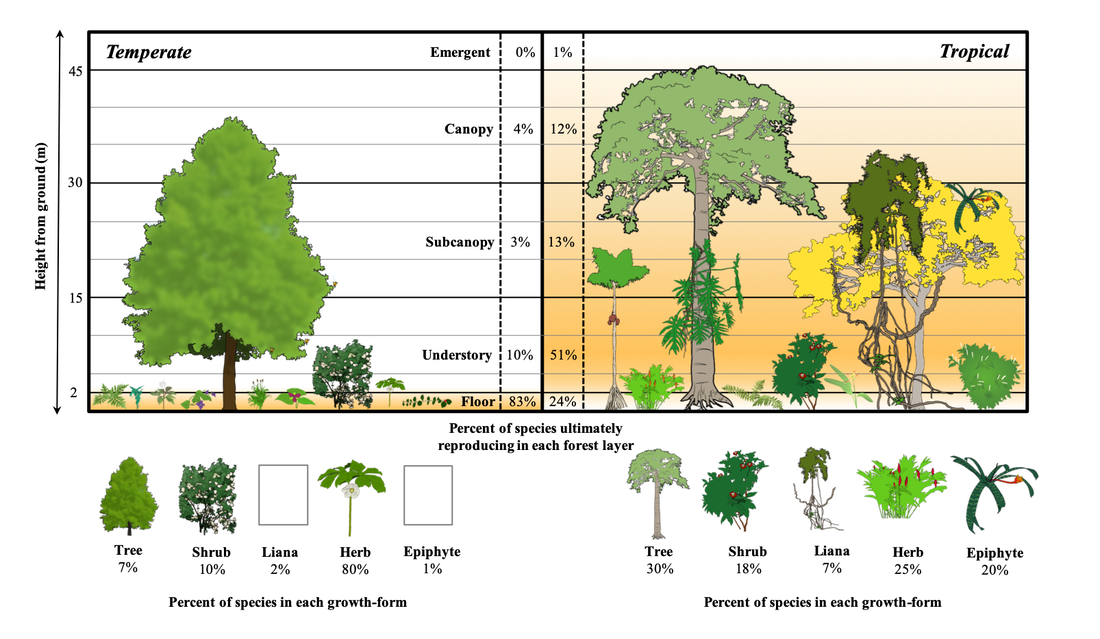Where is the diversity?
Comparing plant distributions across the world
Forests are the most diverse and productive terrestrial ecosystems on Earth, so sustainably managing them for the future is a major global challenge. Yet, our understanding of forest ecology relies almost exclusively on the study of trees. Here, we demonstrate unequivocally that other growth-forms (shrubs, lianas, herbs, epiphytes) make up the majority of vascular plant species in both tropical and temperate forests. By comparing the relative distribution of species richness among plant growth-forms for over 3,400 species in 18 forests in the Americas, we construct the first high-resolution quantification of plant growth-form diversity across two ecologically important regions at a near-continental scale. We also quantify the physical distribution of plant species among forest layers—that is, where among the vertical strata plants ultimately live their adult lives—and show that plants are strongly downshifted in temperate forests versus tropical forests. Our data illustrate a previously unquantified fundamental difference between tropical and temperate forests: what plant growth-forms are most speciose, and where they ultimately live in the forest. Recognizing these differences requires that we re-focus ecological research and forest management plans to encompass a broader suite of plant growth-forms. This more holistic perspective is essential to conserve global biodiversity.
We are following up this project in collaboration with the Kuebbing lab, digging in deeper to how plant traits vary among growth forms and across regions. In particular, we want to know how the proportion of native, non-native, and invasive plants varies between tropical and temperate regions.
Project publication:
Spicer ME, *Mellor H, & Carson WP. “Seeing beyond the trees: a comparison of tropical and temperate plant growth forms and their vertical distribution.” 2020. Ecology: 101(4). DOI:10.1002/ecy.2974
We are following up this project in collaboration with the Kuebbing lab, digging in deeper to how plant traits vary among growth forms and across regions. In particular, we want to know how the proportion of native, non-native, and invasive plants varies between tropical and temperate regions.
Project publication:
Spicer ME, *Mellor H, & Carson WP. “Seeing beyond the trees: a comparison of tropical and temperate plant growth forms and their vertical distribution.” 2020. Ecology: 101(4). DOI:10.1002/ecy.2974

